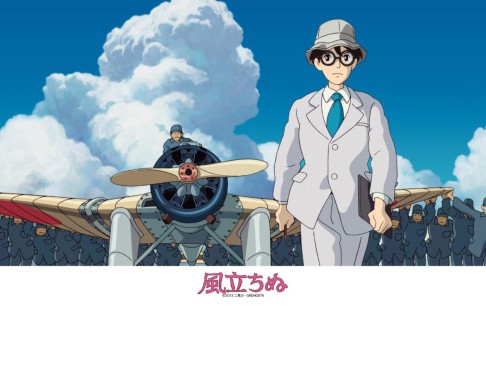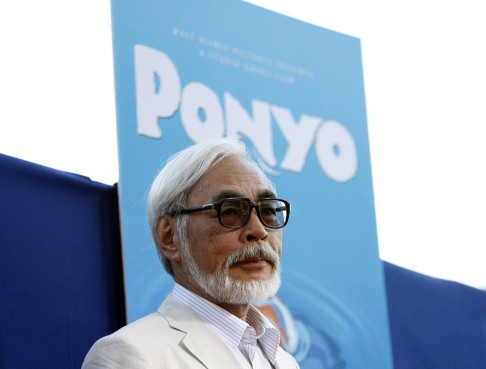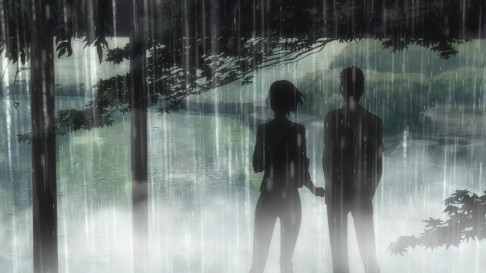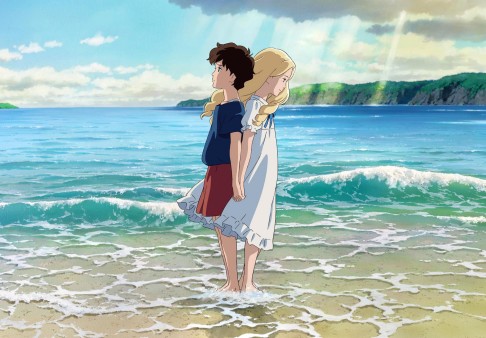
Seismic shifts ahead in Japan's anime industry
Studio Ghibli's hiatus opens the door for the next generation of animators but there are challenges ahead for Japanese anime, writesMark Schilling


In July, as it had done almost annually for more than two decades, Studio Ghibli released an animated feature, Hiromasa Yonebayashi's When Marnie Was There. Based on a 1967 children's novel by British author Joan G. Robinson, this film about a life-changing friendship between two girls received generally positive reviews - but its projected box office take of about 3.6 billion yen (HK$262 million) was less than a third of the 12 billion yen earned by The Wind Rises, Miyazaki's last film, released the summer before.
The likely competition to do what anime does, to compete at a more domestic, perhaps even consciously 'Asian' level, is going to come from China
Its disappointing performance, at least by Ghibli standards, has prompted speculation that When Marnie Was There will be the studio's last film, fuelled by a blogger's mistranslation of remarks made by Ghibli producer Toshio Suzuki, on a Tokyo Broadcasting System documentary show last month. Suzuki's comment that Ghibli might temporarily shutter its production department while it assessed its future direction became an announcement of the studio's imminent demise.

"Miyazaki's retirement is important for people at the studio and for the market … but the animation industry as a whole, us included, is not affected," is how Shuzo John Shiota, president and CEO of Polygon Pictures, a digital animation house with a three-decade history, puts it.
One reason: the industry has long expected the 73-year-old Miyazaki - who will be presented with an honorary Oscar for lifetime achievement on November 8 - and his 78-year-old fellow Ghibli co-founder and master animator, Isao Takahata ( Grave of the Fireflies; The Tale of Princess Kaguya), to fade from the scene.
For another, the industry, says Shiota, is already "moving in a new direction" towards 3-D computer animation, a direction that Miyazaki and much of the anime old guard have long resisted, favouring instead the traditional, hand-drawn 2D style.

But what Shiota describes as "mental barriers" erected by the Japanese audience and industry to full 3D computer animation are eroding. One sign is the enormous success in Japan of Frozen, with the Disney animation earning about US$243 million, the third-highest box office total of any film ever released in Japan.
The all-time leader, Miyazaki's Spirited Away, recorded US$293 million in 2001.

A more telling indicator of the industry's direction may be Stand By Me Doraemon, a 3D CG reboot of a long-running 2D animated series featuring a robot cat from the future and his bumbling boy companion. Directed by live-action hit maker Takashi Yamazaki ( The Eternal Zero; the Always: Sunset on Third Street series) and Ryuichi Yagi, the film earned nearly US$9.6 million in the first three days following its August 8 release and is now expected to finish with US$50.5 million.
Despite this success, the changeover to digital has been slow, notes Jonathan Clements, an expert on Japanese animation and author of Anime: A History. "It involves massive re-skilling and investment in software and hardware," he says.

As the Japanese master animators who began working in the 1960s anime boom follow Miyazaki into retirement, a market gap is appearing that the so-called "new Miyazakis" - such as Makoto Shinkai (The Garden of Words), Mamoru Hosoda (Wolf Children), Keiichi Hara (Colorful) and Yasuhiro Yoshiura (Patema Inverted) - are only partly filling, despite their critical acclaim.
"The likely competition to do what anime does, to compete at a more domestic, perhaps even consciously 'Asian' level, is going to come from China," Clements says.

Shiota, however, doesn't believe the Chinese animators will pose a threat to their Japanese counterparts any time soon. "More of what they're doing now is good technically, but it's not original," he says. "I'm sure that someday they'll make something they can call their own, but I don't see it yet."
He contrasts China's relatively regimented social and political system, which he believes stifles creativity, with Japan's more open society. "We get stimulus from a variety of sources," he says, citing everything from manga to cosplay.
But with Japan's population greying and shrinking, the standard industry strategy of appealing first and foremost to the home audience, with the world market taking second place, means steadily losing ground to more globally minded rivals, beginning with Hollywood.

His ultimate ambition, however, is to make feature films that he describes as "basically Japanese, but marketable internationally" - like those of a certain studio that's long been the country's anime leader.
As for Studio Ghibli, its future, Clements says, may lie less in feature production, and more in managing the rights of Miyazaki and other studio creators. "Ghibli was lightning in a bottle," he says.
"I think what people forget was just how lucky Disney was that Pixar could show up at the right moment and completely revitalise its output with fresh ideas and fresh technology and real talents.
"Ghibli doesn't have that. Ghibli doesn't have a powerful competitor it can embrace and merge with."